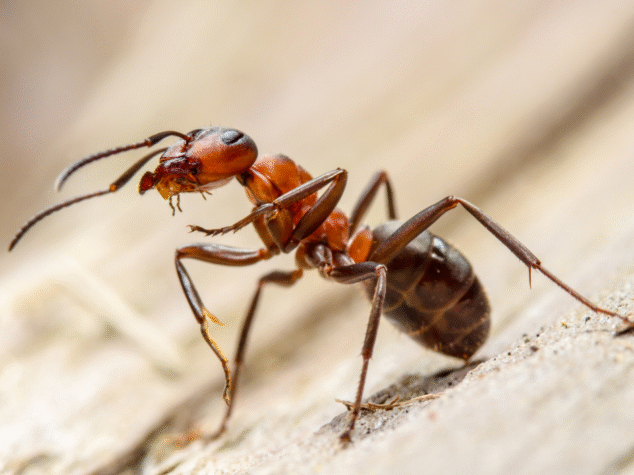As temperatures begin to rise and the ground thaws, many people look forward to the beauty of spring. But alongside blooming flowers and longer days comes an unwelcome guest: ants. Spring is prime time for ant infestations, and if you’ve ever noticed a sudden influx of these tiny invaders, you’re not alone.
Here’s why ant activity spikes in the spring—and what both homeowners and businesses can do to stay protected
Why Spring Brings Ants Indoors
1. Warmer Weather Wakes Them Up
During winter, most ant colonies lie dormant underground or inside insulated spaces. As the weather warms up, ants become active again and start foraging for food to support their colony. Spring is the kickoff to their busy season.
2. Moisture Attracts Them
Spring showers and melting snow create excess moisture in and around buildings. Ants are drawn to damp environments, which may lead them into basements, kitchens, and bathrooms.
3. The Search for Food Begins
Ants are especially motivated in spring to find reliable food sources. Crumbs, sugary spills, and even pet food can attract them indoors. Once a worker ant finds a food source, it lays a pheromone trail for others to follow, quickly turning a few ants into a full-blown infestation.
4. Nest Expansion
Spring is also when many ant species begin to expand their nests. If they’ve previously established a colony near your home or business, they may move closer or inside, as they seek out new nesting spots.
Common Ant Species in Spring
- Odorous House Ants: Often found in kitchens, these ants emit a rotten coconut smell when crushed.
- Carpenter Ants: Attracted to damp or decaying wood, they can cause structural damage.
- Pavement Ants: Frequently found in sidewalks, driveways, and basements.
- Argentine Ants: Known for forming massive colonies and quickly overrunning food sources.
How Homeowners Can Prepare
- Seal Entry Points: Check around windows, doors, and foundation cracks. Use caulk to seal gaps.
- Eliminate Food Sources: Clean up crumbs, store food in airtight containers, and wipe down surfaces regularly.
- Manage Moisture: Fix leaky pipes and ensure good drainage around your property.
- Inspect the Exterior: Trim trees and shrubs that touch the house and remove wood debris near the foundation.
How Businesses Can Prepare
- Train Staff: Educate employees on best practices for food storage, cleanliness, and promptly reporting pest sightings.
- Regular Cleaning: Keep kitchens, break rooms, and dining areas spotless. Don’t forget trash bins and floor drains.
- Schedule Preventive Pest Control: Regular visits from a licensed pest control provider can help detect and prevent infestations before they start.
- Document and Monitor: Keep a pest sighting log and ensure maintenance teams inspect for early warning signs.
When to Call a Professional
If DIY methods aren’t cutting it, or you’re dealing with persistent or damaging ant species, it’s time to call in a pest control expert. Professionals can identify the ant species, locate the nest, and create a targeted treatment plan to protect your home or business.
Ant infestations are a common springtime nuisance, but with proactive steps and a bit of vigilance, they don’t have to become a major problem. By understanding why ants appear this time of year and preparing your property accordingly, you can enjoy the season without sharing it with six-legged invaders.

